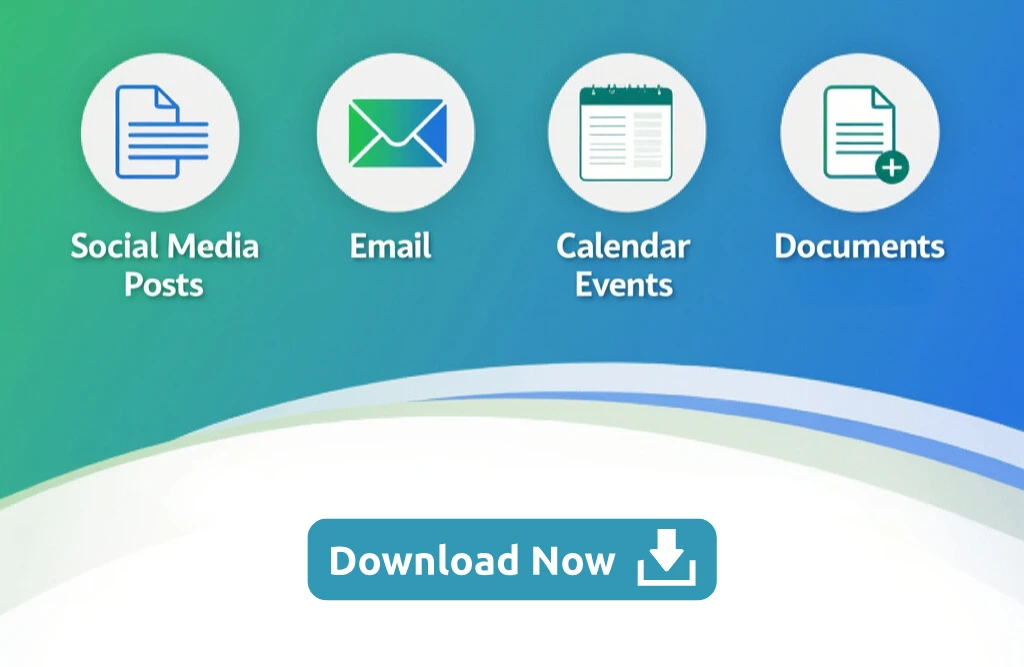
Who Are We
Imagine having a tireless digital assistant working 24/7 to grow your business. At Social Scion, we turn this dream into reality. We’re not just an AI marketing consultancy; we’re your partner in transforming your digital growth journey saving you time and money to focus on your core business.
Our Vision
Blend AI marketing and online presence to work in perfect harmony. Craft stories that are not only relevant and efficient but also data-driven and impactful. At Social Scion, we create digital growth engines that build your identity while you are away.
Our Mission
We’re on a mission to liberate entrepreneurs from the shackles of routine tasks and mundane marketing efforts. By harnessing the power of AI, we’re not just saving you time and money, we’re catapulting your business to new heights.
Founded by visionaries who’ve walked in your shoes, Social Scion is the brainchild of entrepreneurs who understand your struggles and aspirations. We have mastered the art of blending AI marketing strategies with human creativity, ensuring your business doesn’t just survive; it thrives.
Know More About Our Management
Our Services
Imagine having a social media expert working for you 24/7, crafting perfect posts, engaging with your audience, and growing your following while you sleep. That’s the power of our AI Social Media services. We leverage cutting-edge AI marketing strategies to ensure your brand doesn’t just participate in social media; it owns it.
- Automated Content Creation: Keep your feeds fresh, trending and engaging without lifting a finger.
- Intelligent Engagement: AI-powered responses that feel personal and authentic.
- Growth Hacking: Leverage AI to identify and capitalize on growth opportunities.
Your social media presence will no longer be a chore; it’ll be your most powerful outreach tool. Discover how you can save social media costs using AI.
Our AI storytelling services of generating AI images and AI videos ensure your brand voice is heard amongst the content overloads. Our stories not only attract customers but turn them into raving fans.
- Personalized Content: Speak directly to your audience’s hearts and minds.
- Trend Anticipation: Stay ahead of the curve with AI video and AI image trends.
- Multi-Format Mastery: From Avatar to product videos, we ensure your story shines across all formats.
Learn more about how AI storytelling drives your brand identity.
Check out our AI Art and transform your decor with printable art or content with digital artworks.
Our AI Personal Branding services crafts a powerful, authentic representation of you that resonates with your audience and opens doors to new opportunities.
- Brand DNA Analysis: AI-driven insights into your unique strengths and values.
- Consistent Brand Voice: Maintain your authentic voice across all platforms.
- Visual Identity Optimization: Create a cohesive, impactful visual presence.
- Automated Reputation Management: 24/7 monitoring and proactive brand protection.
- Thought Leadership Positioning: AI-crafted strategies to establish you as an industry leader.
With our AI Personal Branding services, watch as your personal brand becomes a magnet for success, attracting opportunities and growing your influence effortlessly.

Say goodbye to sleepless nights and endless to-do lists. Our AI Digital Assistants are your tireless partners, automating routine tasks with precision and efficiency.
- Task Automation: Watch as your AI assistant tackles your to-do list with superhuman efficiency.
- Customer Service: Provide round-the-clock support without burning the midnight oil yourself.
- Data Analysis: Gain invaluable insights without crunching numbers for hours.
With our AI Digital Assistants, you’re not just saving time, you’re multiplying it. Get your AI journey started with Automation Bots and experience the freedom of time and recurring costs for digital growth.
Our AI content creation services provide flexibility to scale with a one-time investment.
AI Blogging: Create SEO-friendly blogs with keywords, and AI images, and directly publish them on WordPress in one click.
SEO Content writing: Craft SEO-driven articles or product reviews with AI Images based on your niche for your Medium, Quora, and Reddit threads.
AI Product Description: Generate SEO-friendly product descriptions or real listing descriptions directly published on your Store.
Turn your website into a content hub by publishing 100 articles in 20 minutes with our AI content automation. Automate your ChatGPT tasks with AI content writing. Look at our AI-driven content for inspiration.

Our Services
Why Choose Social Scion
In a sea of marketing consultancies, why choose us? Simple – we don’t just promise results, we guarantee transformation.
- Time Liberation: Reclaim hours of your day with our AI-powered automation.
- Money Multiplication: Watch your marketing budget work smarter, not harder.
- Exponential Growth: Scale your business beyond your wildest dreams without breaking the bank.
- Story Amplification: Let your unique voice be heard above the noise, attracting loyal customers who resonate with your message.
- Brand Elevation: Transform your personal brand from unknown to unforgettable with our AI-driven strategies.
We’ve walked in your shoes, felt your pain points, and now we’re here to guide you to the promised land of entrepreneurial success. Connect with us to see how we can help amplify your brands!
Our Ethos
Our Process
Let's Talk
Goals We Drive
Social Scion helps entrepreneurs accelerate growth by leveraging AI automation to craft compelling narratives that capture customers’ attention. We nurture impactful customer relationships while seamlessly integrating with broader marketing communication to create a cohesive campaign that drives results. When you partner with Social Scion, you’re not just getting AI marketing services – you’re getting a commitment to your success. Here’s what we aim to achieve:
Skyrocket Efficiency
Watch your productivity soar as our AI assistants take over routine tasks. Get more time to spend building your client relationships or ideating your next business move.
Amplify Your Brand
Let your unique voice be heard loud and clear with our AI-driven personal branding strategies. Grow your organic reach with automated trending, relevant thought-leadership content.
Multiply Your Audience
Attract and engage more of your ideal customers through AI-powered content and social media strategies. Get closer to your customers with real-time response management.
Boost Your Bottom Line
See your revenues grow as our AI optimizes your marketing efforts for maximum ROI. Save recurring costs of image, video footage, and content creation, and invest in business expansion.
Business Growth
With a one-time investment, you can reap lifetime benefits of saved time, money and resources. With more time, you can focus on driving more client outreach efforts or expanding your existing client’s wallet share.
Future-proof Business
Stay ahead of the curve with cutting-edge AI marketing tools and strategies. Our commitment is to support your business at every stage of its journey, ensuring you reach and exceed your goals.
Let's Talk
Why Work With Us
If you’re new to AI Marketing Solutions, it can be difficult to know where to start. And if you don’t have tech-savvy resources who can implement AI marketing automations, it may feel daunting. By partnering with the right AI marketing consultancy like Social Scion, you can achieve tangible results for your business.
In-depth Understanding
We understand your unique challenges because we’ve been there. Our solutions are tailored for the entrepreneurial journey.
Affordable Excellence
We believe in democratizing AI. Our solutions are designed to deliver enterprise-level results without the enterprise-level price.
Personalized Approach
We blend state-of-the-art AI with human creativity and empathy. Our AI solutions are customized to your brand tonality and customer avatar.
Result-oriented Approach
Our success lies in amplifying your digital growth opportunities. Our AI solutions provide tangible measurable results.
Data Integrity
We uphold the highest standards of ethics and transparency in our AI practices. You can trust us to handle your data responsibly and to use AI in ways that are beneficial and fair.
Seamless Technology
Our AI solutions integrate smoothly with your existing systems and processes. This means minimal disruption and maximum efficiency as you transition to smarter marketing.
Get a Free Proposal
AI Automation Guide
We believe in empowering solopreneurs from day one. That’s why we offer a range of free AI automation templates to get you started:
- Social Media Content Creation: Automate your blog to social media post creation with our AI content creation engine.
- Email Response Assistant: Let AI handle your inbox with smart, personalized responses.
- Calendar Management: Never miss Events with our Google calendar to Email notifications automation.
- Shopify Descriptions: Post SEO-friendly Shopify product descriptions from a Google spreadsheet.
- Document organization: Let AI help you manage your Gmail attachment categorization efficiently.
Sign up and receive your free templates. Start experiencing the power of AI marketing today with no investment!

Download Resources
Case Studies
If you’re looking for tangible results, look no further than ours. We have a track record of success that spans across a variety of industries. Browse our success stories to see how we delivered on business goals for our customers.
See Our Work in Action
Blogs
As AI Marketing evolves rapidly, staying updated on the latest tools can be difficult. We strive to keep our readers updated on the latest trends and tips so that they can improve their social media, personal branding, and video content creation strategies. If you haven’t already, enter your email address below to sign up for our newsletter.











